Dinghuai Zhang
FlowRL: Matching Reward Distributions for LLM Reasoning
Sep 18, 2025Abstract:We propose FlowRL: matching the full reward distribution via flow balancing instead of maximizing rewards in large language model (LLM) reinforcement learning (RL). Recent advanced reasoning models adopt reward-maximizing methods (\eg, PPO and GRPO), which tend to over-optimize dominant reward signals while neglecting less frequent but valid reasoning paths, thus reducing diversity. In contrast, we transform scalar rewards into a normalized target distribution using a learnable partition function, and then minimize the reverse KL divergence between the policy and the target distribution. We implement this idea as a flow-balanced optimization method that promotes diverse exploration and generalizable reasoning trajectories. We conduct experiments on math and code reasoning tasks: FlowRL achieves a significant average improvement of $10.0\%$ over GRPO and $5.1\%$ over PPO on math benchmarks, and performs consistently better on code reasoning tasks. These results highlight reward distribution-matching as a key step toward efficient exploration and diverse reasoning in LLM reinforcement learning.
Nabla-R2D3: Effective and Efficient 3D Diffusion Alignment with 2D Rewards
Jun 18, 2025Abstract:Generating high-quality and photorealistic 3D assets remains a longstanding challenge in 3D vision and computer graphics. Although state-of-the-art generative models, such as diffusion models, have made significant progress in 3D generation, they often fall short of human-designed content due to limited ability to follow instructions, align with human preferences, or produce realistic textures, geometries, and physical attributes. In this paper, we introduce Nabla-R2D3, a highly effective and sample-efficient reinforcement learning alignment framework for 3D-native diffusion models using 2D rewards. Built upon the recently proposed Nabla-GFlowNet method, which matches the score function to reward gradients in a principled manner for reward finetuning, our Nabla-R2D3 enables effective adaptation of 3D diffusion models using only 2D reward signals. Extensive experiments show that, unlike vanilla finetuning baselines which either struggle to converge or suffer from reward hacking, Nabla-R2D3 consistently achieves higher rewards and reduced prior forgetting within a few finetuning steps.
Self-Evolving Curriculum for LLM Reasoning
May 20, 2025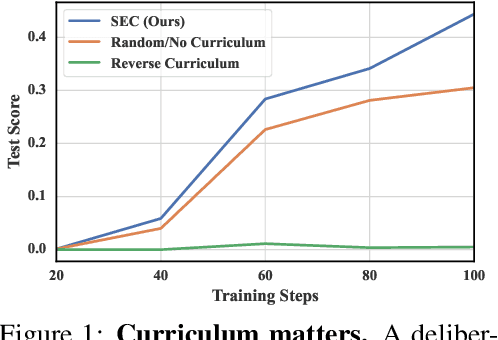
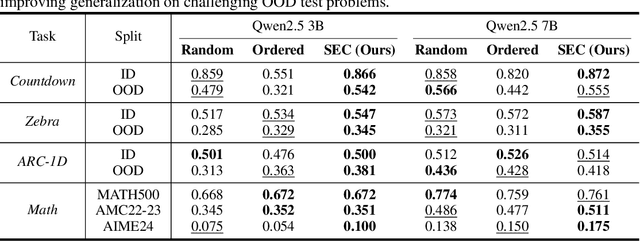
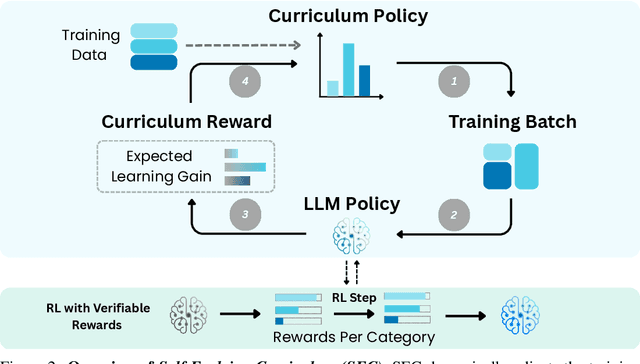
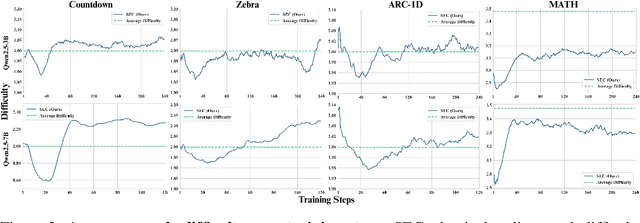
Abstract:Reinforcement learning (RL) has proven effective for fine-tuning large language models (LLMs), significantly enhancing their reasoning abilities in domains such as mathematics and code generation. A crucial factor influencing RL fine-tuning success is the training curriculum: the order in which training problems are presented. While random curricula serve as common baselines, they remain suboptimal; manually designed curricula often rely heavily on heuristics, and online filtering methods can be computationally prohibitive. To address these limitations, we propose Self-Evolving Curriculum (SEC), an automatic curriculum learning method that learns a curriculum policy concurrently with the RL fine-tuning process. Our approach formulates curriculum selection as a non-stationary Multi-Armed Bandit problem, treating each problem category (e.g., difficulty level or problem type) as an individual arm. We leverage the absolute advantage from policy gradient methods as a proxy measure for immediate learning gain. At each training step, the curriculum policy selects categories to maximize this reward signal and is updated using the TD(0) method. Across three distinct reasoning domains: planning, inductive reasoning, and mathematics, our experiments demonstrate that SEC significantly improves models' reasoning capabilities, enabling better generalization to harder, out-of-distribution test problems. Additionally, our approach achieves better skill balance when fine-tuning simultaneously on multiple reasoning domains. These findings highlight SEC as a promising strategy for RL fine-tuning of LLMs.
Learning to Sample Effective and Diverse Prompts for Text-to-Image Generation
Feb 17, 2025Abstract:Recent advances in text-to-image diffusion models have achieved impressive image generation capabilities. However, it remains challenging to control the generation process with desired properties (e.g., aesthetic quality, user intention), which can be expressed as black-box reward functions. In this paper, we focus on prompt adaptation, which refines the original prompt into model-preferred prompts to generate desired images. While prior work uses reinforcement learning (RL) to optimize prompts, we observe that applying RL often results in generating similar postfixes and deterministic behaviors. To this end, we introduce \textbf{P}rompt \textbf{A}daptation with \textbf{G}FlowNets (\textbf{PAG}), a novel approach that frames prompt adaptation as a probabilistic inference problem. Our key insight is that leveraging Generative Flow Networks (GFlowNets) allows us to shift from reward maximization to sampling from an unnormalized density function, enabling both high-quality and diverse prompt generation. However, we identify that a naive application of GFlowNets suffers from mode collapse and uncovers a previously overlooked phenomenon: the progressive loss of neural plasticity in the model, which is compounded by inefficient credit assignment in sequential prompt generation. To address this critical challenge, we develop a systematic approach in PAG with flow reactivation, reward-prioritized sampling, and reward decomposition for prompt adaptation. Extensive experiments validate that PAG successfully learns to sample effective and diverse prompts for text-to-image generation. We also show that PAG exhibits strong robustness across various reward functions and transferability to different text-to-image models.
No Trick, No Treat: Pursuits and Challenges Towards Simulation-free Training of Neural Samplers
Feb 10, 2025



Abstract:We consider the sampling problem, where the aim is to draw samples from a distribution whose density is known only up to a normalization constant. Recent breakthroughs in generative modeling to approximate a high-dimensional data distribution have sparked significant interest in developing neural network-based methods for this challenging problem. However, neural samplers typically incur heavy computational overhead due to simulating trajectories during training. This motivates the pursuit of simulation-free training procedures of neural samplers. In this work, we propose an elegant modification to previous methods, which allows simulation-free training with the help of a time-dependent normalizing flow. However, it ultimately suffers from severe mode collapse. On closer inspection, we find that nearly all successful neural samplers rely on Langevin preconditioning to avoid mode collapsing. We systematically analyze several popular methods with various objective functions and demonstrate that, in the absence of Langevin preconditioning, most of them fail to adequately cover even a simple target. Finally, we draw attention to a strong baseline by combining the state-of-the-art MCMC method, Parallel Tempering (PT), with an additional generative model to shed light on future explorations of neural samplers.
Efficient Diversity-Preserving Diffusion Alignment via Gradient-Informed GFlowNets
Dec 10, 2024Abstract:While one commonly trains large diffusion models by collecting datasets on target downstream tasks, it is often desired to align and finetune pretrained diffusion models on some reward functions that are either designed by experts or learned from small-scale datasets. Existing methods for finetuning diffusion models typically suffer from lack of diversity in generated samples, lack of prior preservation, and/or slow convergence in finetuning. Inspired by recent successes in generative flow networks (GFlowNets), a class of probabilistic models that sample with the unnormalized density of a reward function, we propose a novel GFlowNet method dubbed Nabla-GFlowNet (abbreviated as $\nabla$-GFlowNet), the first GFlowNet method that leverages the rich signal in reward gradients, together with an objective called $\nabla$-DB plus its variant residual $\nabla$-DB designed for prior-preserving diffusion alignment. We show that our proposed method achieves fast yet diversity- and prior-preserving alignment of Stable Diffusion, a large-scale text-conditioned image diffusion model, on different realistic reward functions.
DODT: Enhanced Online Decision Transformer Learning through Dreamer's Actor-Critic Trajectory Forecasting
Oct 15, 2024

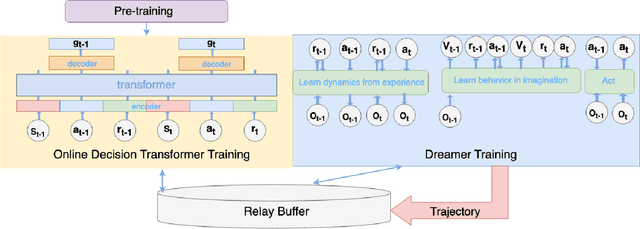
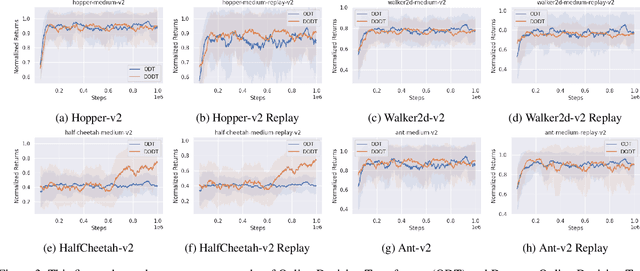
Abstract:Advancements in reinforcement learning have led to the development of sophisticated models capable of learning complex decision-making tasks. However, efficiently integrating world models with decision transformers remains a challenge. In this paper, we introduce a novel approach that combines the Dreamer algorithm's ability to generate anticipatory trajectories with the adaptive learning strengths of the Online Decision Transformer. Our methodology enables parallel training where Dreamer-produced trajectories enhance the contextual decision-making of the transformer, creating a bidirectional enhancement loop. We empirically demonstrate the efficacy of our approach on a suite of challenging benchmarks, achieving notable improvements in sample efficiency and reward maximization over existing methods. Our results indicate that the proposed integrated framework not only accelerates learning but also showcases robustness in diverse and dynamic scenarios, marking a significant step forward in model-based reinforcement learning.
DART: Denoising Autoregressive Transformer for Scalable Text-to-Image Generation
Oct 10, 2024



Abstract:Diffusion models have become the dominant approach for visual generation. They are trained by denoising a Markovian process that gradually adds noise to the input. We argue that the Markovian property limits the models ability to fully utilize the generation trajectory, leading to inefficiencies during training and inference. In this paper, we propose DART, a transformer-based model that unifies autoregressive (AR) and diffusion within a non-Markovian framework. DART iteratively denoises image patches spatially and spectrally using an AR model with the same architecture as standard language models. DART does not rely on image quantization, enabling more effective image modeling while maintaining flexibility. Furthermore, DART seamlessly trains with both text and image data in a unified model. Our approach demonstrates competitive performance on class-conditioned and text-to-image generation tasks, offering a scalable, efficient alternative to traditional diffusion models. Through this unified framework, DART sets a new benchmark for scalable, high-quality image synthesis.
Baking Symmetry into GFlowNets
Jun 08, 2024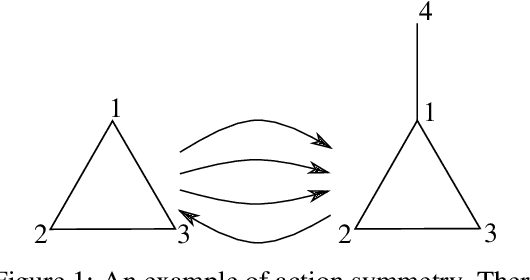

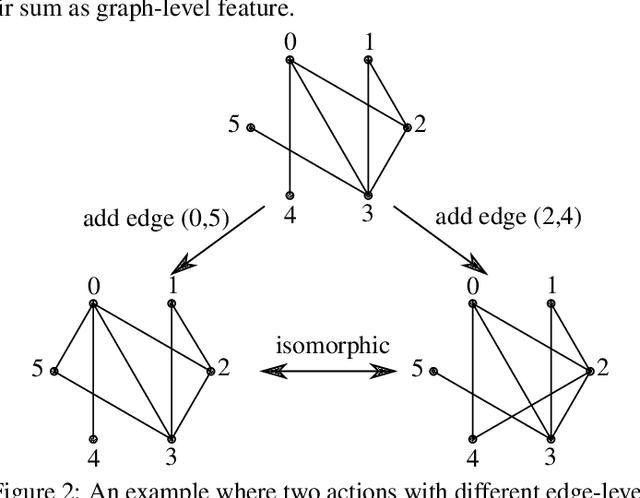
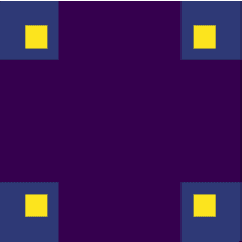
Abstract:GFlowNets have exhibited promising performance in generating diverse candidates with high rewards. These networks generate objects incrementally and aim to learn a policy that assigns probability of sampling objects in proportion to rewards. However, the current training pipelines of GFlowNets do not consider the presence of isomorphic actions, which are actions resulting in symmetric or isomorphic states. This lack of symmetry increases the amount of samples required for training GFlowNets and can result in inefficient and potentially incorrect flow functions. As a consequence, the reward and diversity of the generated objects decrease. In this study, our objective is to integrate symmetries into GFlowNets by identifying equivalent actions during the generation process. Experimental results using synthetic data demonstrate the promising performance of our proposed approaches.
Improving GFlowNets for Text-to-Image Diffusion Alignment
Jun 02, 2024



Abstract:Diffusion models have become the \textit{de-facto} approach for generating visual data, which are trained to match the distribution of the training dataset. In addition, we also want to control generation to fulfill desired properties such as alignment to a text description, which can be specified with a black-box reward function. Prior works fine-tune pretrained diffusion models to achieve this goal through reinforcement learning-based algorithms. Nonetheless, they suffer from issues including slow credit assignment as well as low quality in their generated samples. In this work, we explore techniques that do not directly maximize the reward but rather generate high-reward images with relatively high probability -- a natural scenario for the framework of generative flow networks (GFlowNets). To this end, we propose the \textbf{D}iffusion \textbf{A}lignment with \textbf{G}FlowNet (DAG) algorithm to post-train diffusion models with black-box property functions. Extensive experiments on Stable Diffusion and various reward specifications corroborate that our method could effectively align large-scale text-to-image diffusion models with given reward information.
 Add to Chrome
Add to Chrome Add to Firefox
Add to Firefox Add to Edge
Add to Edge